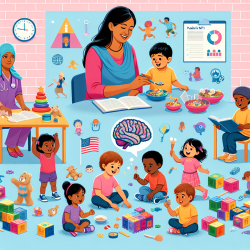Embracing the Great Outdoors: A Path to Healthier Childhoods
In today's fast-paced, technology-driven world, the importance of outdoor time for children is often overlooked. However, a recent study titled Outdoor Time in Childhood: A Mixed Methods Approach to Identify Barriers and Opportunities for Intervention in a Racially and Ethnically Mixed Population sheds light on the critical need to prioritize outdoor activities for children, especially in communities of color.
Understanding the Barriers
The study identifies several barriers that limit children's outdoor time, including safety concerns, inclement weather, lack of access to outdoor spaces, and parents' work schedules. These challenges are particularly pronounced in communities of color, where access to safe and welcoming outdoor environments is often limited.
Safety concerns are a significant barrier, with many parents worried about the dangers present in public parks, such as individuals with mental health challenges or unsafe play areas. Weather also plays a role, as proper clothing and gear are essential but often costly, making outdoor time less accessible for families with limited resources.
Proposed Solutions
To address these barriers, the study suggests integrating outdoor time into the school day. Schools can provide a safe, structured environment where children can engage in outdoor activities regardless of the weather. By increasing recess time and incorporating nature-based learning, schools can offer children the benefits of outdoor play while alleviating parents' concerns about safety and time constraints.
Additionally, the study highlights the importance of community engagement and raising awareness about the benefits of outdoor time. By fostering strong community networks and promoting organized outdoor activities, families can overcome barriers and create a culture that values and prioritizes time spent in nature.
The Role of Culture and Community
Cultural values and traditions significantly influence perceptions of outdoor time. The study found that while many people of color value outdoor activities, they often face cultural and societal barriers that prevent them from spending time outside. By understanding these cultural nuances, practitioners can develop targeted interventions that resonate with diverse communities and encourage outdoor engagement.
Community networks play a crucial role in increasing outdoor time. By building strong, cohesive communities, families can share responsibilities and create safe environments for children to play and explore. This approach not only enhances outdoor opportunities but also strengthens community bonds and promotes overall well-being.
Encouraging Further Research
The findings of this study provide a foundation for practitioners to improve their skills and develop effective interventions. By understanding the barriers and solutions identified, educators and community leaders can advocate for policies and programs that promote outdoor time and address health disparities in childhood.
For those interested in delving deeper into this research, the original study offers valuable insights and data that can inform future initiatives. By embracing a collaborative, community-based approach, we can work towards a future where all children have the opportunity to enjoy the benefits of outdoor play.
To read the original research paper, please follow this link: Outdoor Time in Childhood: A Mixed Methods Approach to Identify Barriers and Opportunities for Intervention in a Racially and Ethnically Mixed Population.










